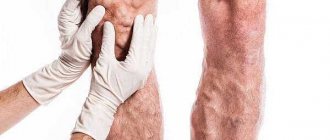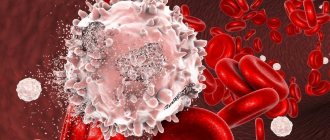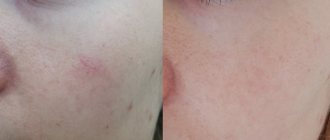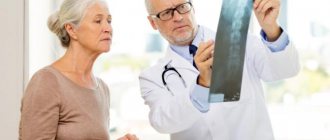The collarbone consists of two paired bones located above the first rib and connecting the upper limbs of a person to the rest of the body. It performs several important functions, providing the necessary range of motion to the arm and transmitting physical impulses from the arms to the axial skeleton. Pain in the collarbone can occur due to injury, but in addition it can be caused by diseases of the internal organs and the musculoskeletal system.
If you have pain under your collarbone or between your collarbones, if the pain is localized on the right or left side, don’t tolerate it! Contact the CELT Pain Clinic, and our specialists will find out the reason why it occurs and prescribe effective treatment. We have modern equipment for diagnostics and treatment, which will definitely help you!
At CELT you can get advice from a specialist algologist.
Make an appointment
Pathogenesis of pain in the collarbone and neck
The clavicle is a tubular bone that connects the sternum and the process of the scapula, so pain in the area of this hollow bone formation and neck occurs quite often. This is a characteristic sign of many diseases, each of which determines the nature of the pain: aching, sharp, dull, pulling, etc. The most common pain is on the right side of the neck. If your neck hurts and radiates to the left or right collarbone, there is every reason to suspect a pathological condition of one of the organs or structures. Similar symptoms are observed when problems occur in the following body systems:
- Nervous system: pain in the collarbone and neck can be caused by disorders in the spinal nerve roots and brachial plexus.
- Cardiovascular system: In this case, symptoms are caused by problems with the vertebral artery and lymph nodes.
- Respiratory system: Pain in the collarbone and neck may indicate problems in the upper part of the lung.
- Support and movement organs: most often the cause of pain is problems with the scalene muscles and the shoulder joint.
- Hard tissue: Sometimes the cause of pain is the collarbone itself.
Causes
Pain in the area of the left or right collarbone and neck does not necessarily indicate that these particular parts of the body are affected. Therefore, in order to eliminate pain, it is necessary to analyze its causes. And they could be next.
Injury
If neck pain radiates to the collarbone after an injury, you should not make hasty conclusions. This characteristic symptom occurs with different types of injuries:
- Clavicle fracture: The most common cause of pain, which is quite noticeable due to the nearby nerve bundles. Even a healed fracture may continue to cause pain if a callus occurs.
- Compression fracture of the spine: we are talking about the cervical spine - after injuries, intervertebral hernias often occur in it, which are the cause of pain in the collarbone and neck.
- Soft tissue injuries: if a hematoma has formed in the area of the collarbone and neck, compression of the nerve bundles may occur and pain may occur. At the same time, the nature of pain can be very different, depending on the degree of traumatic injury and its consequences for the body.
Muscle pain
The development of myalgia as a cause of pain in the collarbone and neck is most often associated with a person staying in one position for a long time or performing monotonous manipulations for a long time. In this case, muscle overstrain and spasm occurs, which causes pain. Also, myalgia in the clavicle and neck area often develops against the background of infectious and viral diseases, as well as as a result of sprains.
Osteochondrosis of the cervical spine
Intense growing pain in the collarbone and neck often indicates osteochondrosis of the cervical spine. It is caused by damage to the spinal discs and the proliferation of bone tissue, which presses on the nerve endings of the spine and causes pain to radiate to the collarbone.
Diagnostics
Pain in the left or right collarbone and neck is a very complex symptom, and even an experienced doctor without modern diagnostic methods will not be able to find its exact cause and make a correct diagnosis. In order to find out why the left or right collarbone and neck hurt, the following methods are used:
- Initial consultation: a neurologist
interviews and examines the patient, prescribes the necessary tests and diagnostic studies. - X-ray of the clavicle: for fractures is the most inexpensive and effective diagnostic method.
- Computed tomography: an even more accurate radiographic examination method that shows the condition of bone and nearby soft tissues.
- MRI: if there is a suspicion that the neck and area under the left or right collarbone hurts due to problems with the cardiovascular system or for another reason that is not related to bone structures, this type of study may be prescribed.
Diagnosis of pain in the collarbone
Specialists at the CELT Pain Clinic do not recommend self-medication, as it can cause irreparable harm to your body. In order for the treatment to be successful, it is necessary to identify the reason why the collarbone hurts and direct all efforts to eliminate it.
In addition to being examined by a doctor and taking a medical history, diagnosing collarbone pain includes the following:
- radiography of the collarbone;
- CT scan;
- Magnetic resonance imaging.
Treatment options
If we are talking about a fracture, first aid to the patient is provided by a traumatologist. But, no matter what causes pain in the collarbone and neck, the attending physician must prescribe the following treatment methods.
Medicines
Drug therapy for the treatment of pain in the collarbone and neck can have several directions. First of all, to relieve pain, the doctor prescribes analgesics. The patient may also be prescribed anti-inflammatory drugs and ointments.
Folk remedies
Folk remedies, when used correctly, are an effective auxiliary method for treating pain in the collarbone and neck. Sometimes they are prescribed by the attending physician. If the patient has found a folk remedy that seems effective to him, he should consult with his doctor and only with the latter’s approval decide on unconventional treatment. Also, as part of the main treatment for pain, the patient may be prescribed massage in the area of the collarbone and neck, acupuncture and other auxiliary methods. Additional treatment methods are chosen by the doctor depending on why the pain appeared. The diagnosis and treatment of pain in the collarbone and neck must be taken responsibly, as otherwise surgery may be required. But with timely access to a medical institution, given the modern level of development of medicine, this rarely happens.
Diagnosis of the pathological condition
To determine the cause of discomfort, the patient needs to undergo a hardware examination.
The most informative methods of radiation diagnostics are x-ray examination, MRI or CT. Blood tests determine the level of hormones and glucose; identify oncological markers, biochemical and clinical indicators. To exclude the development of a tumor process, it is necessary to undergo a biopsy of the identified neoplasm and subsequent histological examination of a sample of the material taken. Since the collarbone is located close to the heart, symptoms of disruption of its activity may be mistakenly perceived as signs of inflammation of the osteochondral structure. As part of differential (comparative) diagnosis, the patient undergoes an ECG. Additionally, he donates blood to determine the level of troponin (this is a component whose concentration determines the risk of developing myocardial infarction).
If you suspect the progression of rheumatism, you need to undergo laboratory diagnostics. An informative type of examination is a blood test to determine C-reactive protein and rheumatoid factor.
Prevention
Pain in the collarbone and neck area can occur for various reasons, and no one is immune from this unpleasant symptom. To avoid having to start long-term treatment again, for prevention you should get into the habit of:
- Physical exercises and warm-up: will prevent osteochondrosis if a person is in the same position for a long time, and will also prevent myalgia from developing.
- Timely treatment of infectious and viral diseases: this will prevent pain in the collarbone and neck due to myalgia that accompanies these diseases.
- Timely consultation with a doctor in case of injuries will help avoid the negative consequences of fractures. Also, in order to avoid pain in the collarbone and neck area, it is recommended to prevent hypothermia of the body, when it becomes especially vulnerable to infections and viruses, against which more serious pathological conditions can arise.
What is the difference between pain under the left and right collarbone?
It is important to understand that pain under the left collarbone in some cases can be associated with myocardial diseases. These are angina pectoris, coronary heart disease, atherosclerotic lesions of the coronary blood vessels, valve disease, myocardial infarction, etc. Also, false pain under the left clavicle can occur with the cardiac type of vegetative-vascular dystonia. therefore, if such a symptom appears, you should immediately contact your doctor and ask for a referral for an ECG.
This examination will exclude organic, vascular and neurological damage to the heart muscle. Next, you should consult a neurologist regarding the diagnosis of vegetative-vascular dystonia. And only after this should you look for pathology of the musculoskeletal system (arthrosis, arthritis, deformity, traumatic damage to the acromial or sternal joint).
The first difference between pain under the right collarbone is the exclusion of vascular and cardiac pathology. When such a symptom appears, you can immediately begin diagnosing diseases of the bone and cartilage, articular and spinal structures. It is important to exclude the following pathologies step by step:
- arthritis of the sternoclavicular or acromioscapular joint (manifested by severe pain on palpation, inflammation and swelling of the joint capsule);
- arthrosis of similar joints (manifested by a characteristic crunch when moving, pain on palpation, limited mobility in the shoulder joint);
- habitual dislocation of the collarbone (often occurs in people who are accustomed to actively gesturing with their hands during an emotional conversation; the displacement of the collarbone is visible to the naked eye in the form of a deformation of the chest in this area);
- inflammation of the lymph nodes;
- rheumatism, inflammation of joints and bone tissue;
- bone tuberculosis and other dangerous infections.
Only an experienced doctor can detect the exact cause of pain under the collarbone. Already during the collection of anamnesis and the initial examination, he will be able to make a preliminary diagnosis and prescribe additional examinations. Do not waste time, do not engage in self-diagnosis and treatment. Sign up for a free initial consultation with our orthopedist.
WHEN SHOULD YOU BE CONCERNED?
Osteoarthritis or arthritis of the clavicular bone is a form of inflammation caused by wear and tear of the intra-articular cartilage. The latter is possible due to natural aging, autoimmune diseases, infections or injuries. The body signals about pathology more than clearly:
- “point” pain occurs associated with raising your arms up, trying to draw a circle with your hand from front to back;
- the person, without noticing, restrains the activity of the arm connected to the affected clavicular bone;
- often in patients with arthritis there is a feeling that the bone will disintegrate into small parts during movement;
- due to the specific location of the clavicle bone, its arthritis is often accompanied by prominent swelling, redness, weakness, fever and enlargement of nearby lymph nodes.
What is required to recognize pathology?
Such signs of arthritis cannot be left unattended. How to limit the treatment of clavicular pain with analgesics. Arthritis is one of the group of inflammatory reactions that not only do not go away without treatment, but also progress rapidly. Due to the proximity and small surface of the clavicular bone, there is a high risk of developing erosion, damage to the junction with the scapula, and bone wear (increasing its fragility). Additionally, abscesses may develop and purulent foci may appear. Against this background, toxicosis, inflammation of soft tissues, and infection of adjacent areas often develop. A positive factor is that the clavicular bone structure is clearly visible on x-rays. This method is the basis for recognizing pathology (although visual signs of arthritis affecting the clavicular bone are quite informative). To assess the affected area and verify the provoking disease (polyarthritis, arthritis of the humerus or scapula, spondyloarthritis, lordosis, kyphosis, spondylosis, osteophytes), it can Contrast x-rays (arthrography) will be required. MRI and ultrasound - to study the spread of the inflammatory process into soft tissues.
Causes
The most common cause of shoulder and neck pain is damage to soft tissues, including muscles, ligaments, and tendons. Such injuries can occur from whiplash or other injuries. With degenerative arthritis in the cervical spine, compression of the roots and the appearance of neck pain may occur, radiating to the shoulder and arm. With degenerative changes in the intervertebral discs, there may be local pain or radiating pain during disc herniation, when the root is compressed by the disc herniation. Pain in the neck and shoulder can also be caused by various pathologies of the spinal cord, lungs of the heart, and sometimes even due to diseases of the abdominal organs.
For example, in conditions such as:
- Clavicle fracture. As a rule, a collarbone fracture occurs when falling on an outstretched arm (for example, this is often found in cyclists).
- Bursitis. When the joint capsule is injured, inflammation occurs, causing pain and stiffness.
- A heart attack (angina or heart attack) may present with pain in the neck and/or shoulder, and the pain is referred.
- Fracture of the scapula. As a rule, scapula fractures occur when there is a forced impact on the scapula.
- Damage to the rotator cuff. The rotator cuff is a group of tendons that provide support to the shoulder. These tendons can be damaged by heavy lifting, sports that involve throwing or repetitive movements. Long-term repetitive stress leads to pain when moving the shoulder and the development of impingement syndrome and, over time, to a significant decrease in the range of motion in the shoulder (frozen shoulder).
- Shoulder separation. The collarbone and shoulder blade are connected by ligaments, and when an injury occurs, the ligaments can stretch or tear.
- Whiplash injury. This is damage to the ligamentous and muscular structures of the neck and shoulder, which occurs during sudden hyperextension, for example in a car accident.
- Tendinitis. Tendons attach muscles to bones. When a tendon is sprained, inflammation of the tendons occurs, which can cause pain.
- Cholecystitis. Inflammation of the gallbladder can cause pain in the right shoulder.
- Inflammation of the diaphragm due to various reasons can also be a source of referred pain.
Pain when coughing
Fungus
Ulcer
19254 09 December
IMPORTANT!
The information in this section cannot be used for self-diagnosis and self-treatment.
In case of pain or other exacerbation of the disease, diagnostic tests should be prescribed only by the attending physician. To make a diagnosis and properly prescribe treatment, you should contact your doctor. Pain when coughing: causes of occurrence, what diseases it occurs with, diagnosis and treatment methods.
Definition
Pain when coughing is most often associated with respiratory diseases and is localized in the chest.
The respiratory system consists of the upper respiratory tract (nasal cavity, larynx) and lower respiratory tract (trachea, bronchi and lungs). The air passing through the respiratory tract is cleaned, warmed, and moistened. At the end of the smallest bronchi (bronchioles) there are alveolar ducts and alveolar sacs, in which gas exchange occurs. The respiratory bronchioles, alveolar ducts and alveolar sacs with alveoli make up the alveolar tree, or respiratory parenchyma of the lung. The listed structures, originating from one terminal bronchiole, form a functional anatomical unit - the acinus. The alveolar ducts and sacs belonging to one respiratory bronchiole constitute the primary lobule (there are about 16 of them in each acini). The number of acini in both lungs reaches 30,000, and the alveoli - 300-350 million. The acini make up lobules, the lobules make up segments, the segments make up lobes, and the lobes make up the whole lung.
Each lung is enclosed in a double membrane - two layers of pleura, between which there is a sealed pleural cavity filled with a very small amount of fluid.
Coughing is the body’s protective reaction to any irritation of the respiratory tract.
Irritants of cough receptors can be sputum, blood in the respiratory tract, mucus from the nose flowing down the back of the throat, various allergens, smoke, dust, foreign bodies, cold air, certain medications, etc. Types of pain when coughing
Pain when coughing can be severe or low intensity, sharp or dull, limited or diffuse. The location of the pain depends on the cause of the cough and the affected organ. It can be felt in the throat, behind the sternum, inside the chest, under the ribs, in the back, stomach, and radiate to the head. Cough and pain can be symptoms of the same disease or independent of each other.
Possible causes of pain when coughing
The following causes of pain when coughing are identified:
- overstrain of the respiratory muscles involved in coughing;
- diseases of the respiratory system;
- heart disease;
- injuries and diseases of the bones, muscles and nerves of the chest;
- diseases of the digestive system;
- kidney diseases, etc.
What diseases cause pain when coughing?
In diseases accompanied by a constant painful cough, the intercostal muscles and diaphragm become overstrained, which manifests itself as dull, diffuse muscle pain.
When the mucous membrane of the trachea is inflamed (tracheitis), a dry, loud, hacking, rough cough occurs, which is characterized by burning and pain in the chest.
The severity of pain decreases when a dry cough turns into a wet one. Tracheitis is most often infectious, caused by viruses or bacteria.
Patients' general health worsens and their body temperature rises.
With inflammation of the lungs (pneumonia), a deep cough with sputum is noted, pain appears in the chest in the projection of the inflamed area of the lung.
The pain increases with coughing and deep inhalation due to the movement of the pleura, and decreases if the patient lies on the side of the affected lung.
Inflammation of the lungs can be primary, in this case the disease begins acutely - with chills, weakness, an increase in body temperature to 38–39 ° C, accompanied by a cough and difficulty breathing, more often occurs as a croupous lesion, that is, the inflammatory process takes over the entire lobe with the involvement a large area of pleura. And it can be secondary, when inflammation moves from the bronchi to the lung tissue. A focus of bronchopneumonia occurs, but even in this case the pleura can become inflamed, with the only difference being that the size of the lesion is much smaller. Pneumonia can be caused by bacteria, viruses, fungi, and parasites.
Pleurisy (inflammation of the pleura) can be infectious or non-infectious. Infectious pleurisy
occurs with pneumonia, lung abscess, bronchiectasis (dilation and deformation of the bronchi with the development of chronic purulent inflammation), tuberculosis, abscess under the diaphragm, inflammation of the perirenal adipose tissue, inflammation of the pancreas.
Non-infectious pleurisy
is caused by systemic connective tissue diseases (rheumatoid arthritis, systemic lupus erythematosus, etc.), spread of tumor cells to the pleura, decreased pumping function of the heart (for example, with myocardial infarction, pulmonary embolism), chest injuries (closed rib fractures) and etc. Pleurisy can be dry, in this case the amount of fluid in the pleural cavity decreases, the inflamed layers of the pleura do not slide, but rub against each other when breathing, which provokes a very painful reflex cough, which intensifies with inhalation. Pleurisy is exudative, when due to the inflammatory process fluid is released and accumulates in the pleural cavity. During the period of fluid accumulation, the clinical picture is similar to dry pleurisy, then the fluid pushes the layers of the pleura apart, the pain becomes weaker, but at the same time, due to compression of the lung, shortness of breath occurs.
With gastroesophageal reflux disease, due to the reflux of acidic gastric contents into the esophagus, its mucous membrane becomes inflamed, heartburn, sour belching, pain, burning behind the sternum and coughing are observed, which increases the pain.
Lung tissue does not have pain receptors, therefore, with lung cancer, pain appears when tumor cells grow into the surrounding tissues - pleura, trachea, bronchi, etc. In this case, the patient is bothered by a painful cough, often with blood. General health worsens, weakness, weight loss for no apparent reason bothers you.
A similar situation arises if metastases from other organs enter the lungs; this can happen with cancer of the breast, stomach, esophagus, rectum, skin (melanoma), kidney, liver, etc.
Pericarditis (inflammation of the lining of the heart), similar to pleurisy, can be dry and effusion. It can be caused by heart diseases (myocardial infarction, inflammation of the heart muscle, etc.), various infections, systemic connective tissue diseases, heart injuries, tumors, etc. Dry pericarditis is accompanied by a gradually increasing dull, pressing pain behind the sternum, radiating to the neck and left shoulder blade. In this case, a rapid heartbeat, shortness of breath, and a dry cough appear, which increases the pain. As fluid accumulates between the layers of the pericardium, the condition worsens due to compression of the heart.
Intercostal neuralgia occurs when the intercostal nerve is compressed at the level of its exit from the spine or along its course. It manifests itself as a sharp, aching pain that intensifies during a deep breath and coughing.
Cough increases pressure in the abdominal cavity and pelvic area, therefore, in case of inflammatory diseases of the gastrointestinal tract (for example, appendicitis), pelvic organs (for example, inflammation of the ovaries), hernias (linea alba, umbilical, inguinal), cough can provoke or intensify an already existing pain.
The brain and spinal cord are washed by cerebrospinal fluid, its fluctuations during coughing increase intracranial pressure, and headaches occur. This process can be natural, or it can hide serious diseases: space-occupying formations in the cranial cavity, vascular abnormalities that impede the movement of cerebrospinal fluid.
Which doctors should I contact?
First of all, you should contact a general practitioner, and he, if necessary, will refer you to a specialist for consultation (, , etc.).
Diagnosis and examinations in case of pain when coughing
To identify the causes of pain when coughing, the doctor collects anamnesis, conducts a thorough examination of the patient and prescribes additional laboratory and instrumental tests.
- Clinical blood test with a detailed leukocyte formula.
RECOVERY AND PREVENTION OF RECURRENCES
The treatment of any arthritis, including pathology of the joints “connected” to the clavicle bone, is based on three directions:
- Medication. Analgesics and anti-inflammatory (non-steroidal) medications will help relieve pain and help you get a good night's sleep.
- Severe pain in the anterior part of the clavicular bone often occurs at night; against the background of fatigue and lack of sleep, the patient may develop psychological instability. To normalize his condition, antidepressants and sedatives are prescribed.
- A set of exercises is recommended both during the treatment of arthritis and during remission. Exercise therapy strengthens the affected area, triggers natural regenerative processes, and restores the mobility of the clavicular bone.
- Advanced clinics practice manual therapy, treatment with warm compresses and exposure to bioactive points for arthritis of the clavicular bone.
- Particularly severe cases require radical treatment with arthroplasty or surgical cleansing of the inflamed areas.
The prognosis for active treatment of arthritis in the case of damage to the clavicular bone is good. To prevent relapse, experienced rheumatologists recommend cryotherapy, swimming and self-care. If arthritis is triggered by frequent microtraumas at work, it is advisable to change jobs.
Symptoms
The pain is most often sharp, but can also be dull or with a burning, tingling or electrical sensation. The pain can lead to neck or shoulder stiffness and decreased range of motion. In addition, there may also be a headache. The peculiarity of the symptoms is important for the doctor, as it allows you to find out the cause of the pain syndrome.
Weakness may be associated with severe pain in the muscles or bones when moving. In addition, damage can also affect nerves and therefore it is necessary to differentiate true weakness (muscular or nerve) from reduced weakness associated with pain or inflammation.
Numbness. If there is compression (bruise, injury) of the nerves, sensitivity may be impaired. In addition to numbness, there may be a tingling or sinking sensation.
Cold weather. Cold arms or hands may indicate possible damage to veins or arteries. This symptom usually indicates insufficient blood circulation in the limb.
Color change. Blue or pale discoloration of the arm or shoulder may also be a sign of damage to the veins or arteries. Redness may be a sign of infection or inflammation.
Swelling. Swelling can be either generalized throughout the arm or local in the area of problematic structures (for example, a fracture zone or an inflamed bursa). Muscle spasms or tightness can simulate swelling. Dislocation or deformation can also cause swelling.
Deformation can occur due to a fracture or dislocation. Tendon ruptures can cause abnormal alignment of bone structures.
If you have symptoms such as increasing pain, weakness, coldness of the limb, deformity, fever, or symptoms such as dizziness, difficulty breathing or severe numbness or weakness, you should immediately seek medical help.










